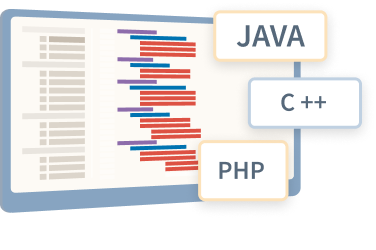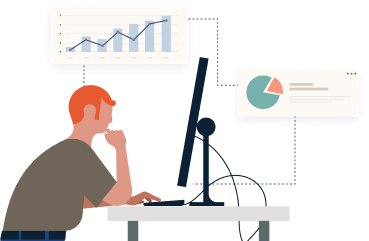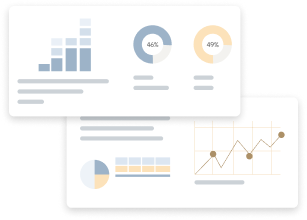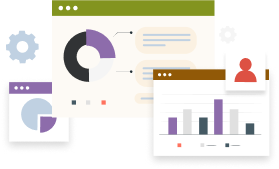
As businesses increasingly rely on mountains of data to make important decisions and spark innovation, data science and data analytics have become crucial. However, while they have some similarities, these two fields have distinct approaches, goals, and skills that set them apart.
In this brief guide, we will explain both of these fields and discuss the skills, tools, techniques and career paths associated with each one. And, of course, we will explore the LinkedIn Learning courses that can help your team succeed in either field, or both.
Defining data science
Data science is the broader of the two fields. It involves the application of statistical analysis, machine learning, data mining, and domain expertise to collect, process, analyze, and interpret large and complex datasets. Data scientists tackle complex problems, often working with unstructured and raw data. They use programming languages like Python or R and employ advanced computational techniques to build models and create algorithms. Data science focuses on predictive modeling, data visualization, and the development of data-driven solutions that drive decision-making, innovation, and strategic planning.
Defining data analytics
Compared to data science, data analytics is a narrower field. It primarily focuses on examining and interpreting data to understand patterns, trends, and relationships. Data analysts work with structured and organized data, often obtained from databases, spreadsheets, or business intelligence tools. Data analytics emphasizes the examination of historical data to identify trends, assess performance, and gain actionable insights. It involves descriptive and diagnostic analysis, where analysts draw conclusions and make recommendations based on the available data. Data analytics plays a crucial role in providing businesses with valuable information to support decision-making, optimize processes, and identify areas for improvement.
In short, you could say that data science is more focused on developing predictive models from raw data, while data analytics is about deriving insight from historical data.
A strong foundation in mathematics and statistics
Concepts such as probability, linear algebra, calculus, and statistical inference serve as the building blocks for data analysis and modeling. A deep understanding of these mathematical principles allows data scientists to effectively interpret data, formulate hypotheses, and apply statistical techniques to draw meaningful insights.
Proficiency in programming languages
Many data scientists write their own queries, using programs like Python and R. Python offers a versatile ecosystem of libraries, such as NumPy and pandas, which provide powerful tools for data manipulation and analysis. R features robust statistical and graphical capabilities, making it a preferred choice for statistical modeling and visualization. Mastery of these languages is essential to efficiently process and analyze data, automate tasks, and build data models.
Recommended course: Python for Data Science Essential Training Part 1 by Lillian Pierson, P.E.
Knowledge of machine learning algorithms and techniques
Data scientists must possess a strong knowledge of machine learning algorithms, including:
- Supervised and unsupervised learning methods
- Regression
- Classification
- Clustering
- Dimensionality reduction
Familiarity with various machine learning frameworks and libraries, such as scikit-learn and TensorFlow, enables data scientists to develop models that can make accurate predictions, recognize patterns, and uncover valuable insights.
Recommended course: Machine Learning with Scikit-Learn by Madecraft and Michael Galarnyk
Understanding of data engineering and data wrangling
Data scientists need to be adept at collecting, cleaning, and transforming data from diverse sources into a usable format. Proficiency in SQL, along with knowledge of big data technologies like Hadoop and Spark, allows data scientists to handle large-scale datasets efficiently. Furthermore, expertise in data wrangling techniques enables them to address data quality issues, handle missing values, and create structured datasets for analysis.
Expertise in data visualization and communication
Data scientists should possess strong data visualization skills to effectively communicate their findings and insights. Visualization techniques enable data scientists to present complex information in a visually compelling and understandable manner.
Recommended course: Data Visualization: Storytelling by Bill Shander

Proficiency in data analysis and statistical techniques
Mastery of descriptive statistics, hypothesis testing, and regression analysis equips data analysts with the necessary tools to uncover patterns, trends, and correlations within datasets. These analytical skills enable them to examine data from multiple angles, derive meaningful insights, and support decision-making processes.
Recommended course: Career Essentials in Data Analysis certification path
Familiarity with data manipulation and querying (SQL)
While data analysts don’t need a data scientist’s comprehensive skill with coding, general proficiency in Structured Query Language (SQL) is essential. SQL allows analysts to efficiently retrieve, manipulate, and organize data stored in relational databases. With the ability to write complex queries, data analysts can extract specific information, perform aggregations, and join tables, enabling them to navigate vast amounts of structured data.
Experience with data visualization tools
Data analysts should be familiar with data visualization tools such as Power BI. These tools enable analysts to transform complex data into interactive dashboards, charts, and graphs. Data analysts can use these tools to effectively communicate their findings and tell the story of the data to a non-specialist audience.
Recommended course: Power BI Data Visualization and Dashboard Tips, Tricks, & Techniques by Emma Saunders
Strong analytical thinking and problem-solving skills
Data analysts need to approach complex business problems with a logical mindset, break them down into manageable parts, and develop effective analytical strategies. Data analysts should be adept at identifying trends, recognizing outliers, and asking insightful questions that uncover new insights.
Recommended Course: “Critical Thinking and Problem Solving” with Madecraft and Eric Zackrison
Ability to interpret and present data insights effectively
One of the most important skills for data analysts is the soft skill of communication. Analysts need to translate complex analytical findings into meaningful narratives that resonate with stakeholders. Effective communication skills, both written and verbal, enable data analysts to pass on actionable information to non-technical audiences, fostering a data-driven decision-making culture within organizations.
Data scientist’s roles and responsibilities:
- Conducting exploratory data analysis to identify patterns, trends, and correlations.
- Developing and implementing machine learning models and algorithms for predictive analytics.
- Cleaning, preprocessing, and transforming data to ensure its quality and suitability for analysis.
- Collaborating with cross-functional teams to define business problems and formulate data-driven solutions.
- Communicating complex findings and insights to non-technical stakeholders in a clear and actionable manner.
- Staying up-to-date with the latest advancements in data science techniques, tools, and technologies.
Data analyst roles and responsibilities:
- Collecting, cleaning, and organizing data from various sources to ensure data quality and integrity.
- Applying statistical techniques to analyze data, identify trends, and draw meaningful conclusions.
- Creating data visualizations, dashboards, and reports to effectively communicate findings to stakeholders.
- Collaborating with teams to define and refine data requirements and business objectives.
- Conducting ad hoc data analyses and generating reports to answer specific business questions.
- Assisting in the development and maintenance of data-related tools and systems.
Advancement opportunities and career growth in each field:
Both data science and data analytics offer promising career paths with opportunities for growth and advancement. In data science, professionals can advance into roles such as senior data scientist, machine learning engineer, data science manager, or data science consultant. These positions typically involve leading complex projects, managing teams, and influencing strategic decision-making.
In data analytics, professionals can progress to roles such as senior data analyst, business analyst, analytics manager, or data analytics consultant. These roles often involve broader responsibilities, including guiding data-driven strategies, overseeing analytics projects, and collaborating with executive-level stakeholders.
Career growth in both fields is influenced by factors such as experience, skills development, industry knowledge, and the ability to apply insights effectively to drive business outcomes. Continuous learning, staying updated with emerging technologies and techniques, and pursuing advanced certifications can enhance career prospects in both fields.





















